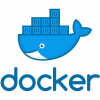Related Content
|
|
Agile for Everything: Taking the Manifesto beyond Software The values of the Agile Manifesto, while written to apply to software, can form a basis for an adaptive approach to any project. Going from specific to general and inspecting and adapting along the way are great design ideas, no matter what you’re working on. Here's how to use feedback to take agile beyond software. |
|
 |
What Aircrews Can Teach DevOps Teams Aircrews learn a set of skills involving a structured way of communicating that breaks down barriers and forces an honest evaluation of the issues. They also automate what they can but still practice their craft over and over again, including what to do during failures. DevOps teams can learn a lot from aircrews. |
|
 |
Why the Minimum Viable Product Matters The MVP brings tremendous value to a team’s ability to effectively implement agile practices. It also allows us to better understand what “value” actually means to our users and how context changes the meaning. Your MVP must move through your validation and release cycles while still being valuable to your users. |
|
 |
How Testers Can Use Docker to Shift Left and Automate Deployments Docker has several advantages over virtual machines: It’s easier to deal with, starts up faster, and requires fewer resources. Using Docker also can give testers more confidence in their releases. Developers use the same environment that will be used in production, which streamlines code delivery and shifts QA left. |
|
 |
Learn Agile Principles Indirectly through Practice One of the primary questions for agile teams adopting a new approach such as Scrum is whether to start with principles or practices. Sometimes the best way to learn principles is indirectly, through practice. Experiences are a great way to learn, and sometimes they even teach you skills without your realizing it. |
|
 |
The Testing Practices and Metrics That Really Matter in Agile and DevOps Scaled agile and DevOps change the game for software testing. It’s not just a matter of accelerating testing; it’s also about fundamentally altering the way we measure quality. The test outcomes required to drive a fully automated release pipeline are dramatically different from the ones most teams measure today. |
|
 |
Predictive Analytics to Give Quality Engineering a Facelift Test automation is only as smart as we design it to be, but automation combined with artificial intelligence and machine learning is what can enable predictive analytics to produce smart outcomes—and that is the facelift quality engineering will soon receive. |
|
 |
If You Want Training to Take, Explore Experiential Learning People typically think of training classes as passive activities, where the instructor talks and the others listen. But experiential learning, where you learn through hands-on activities and then reflect on the experience, often gets the lesson to stick in people's brains better. Consider using interactive lessons. |






